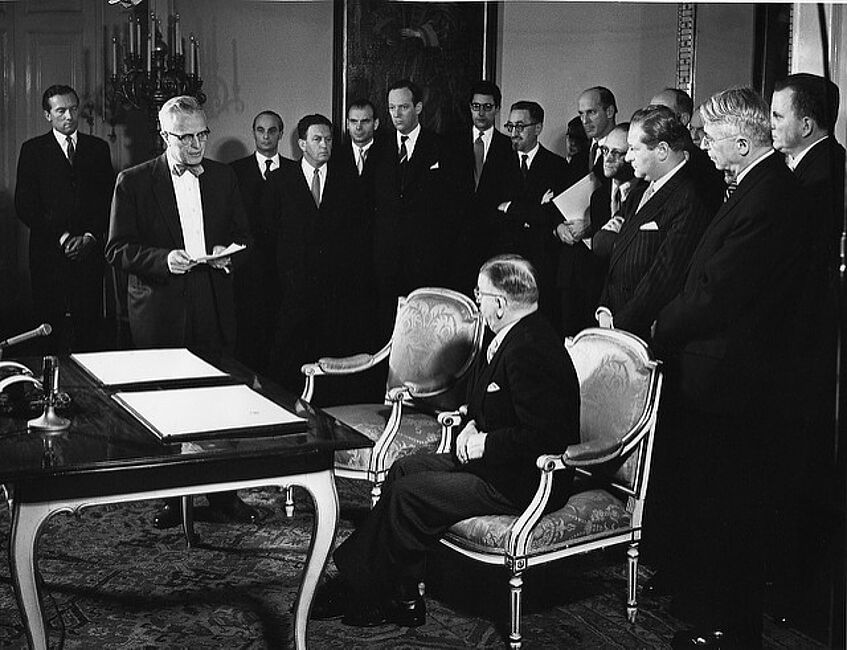The Creation of the IAEA
Nuclear physicists were among the first to address the possibility of an international control system on nuclear material to prevent the danger of a future nuclear war. As early as 1944, nuclear scientists were calling on the world’s powers to institute such a global nuclear regime. However, despite the destruction and horror witnessed by the atomic bombs dropped on Hiroshima and Nagasaki, it was not until 1953, when United States President Dwight D. Eisenhower delivered his famous “Atoms for Peace” speech to the United Nations General Assembly in New York, that the world saw the necessity to develop the institutional basis for a nuclear regime.
It took only four years of negotiations to bring the IAEA into being. This represents an incredible feat, not least to agree on the organization’s mandate, to negotiate the statute, to decide on its location, and to find key personnel, all at a time when the world was split between opposing blocs. As a result, the creation of the IAEA provides a fascinating study into the creation of an international organization.
The type of international organization envisioned in negotiations
The IAEA was founded to promote the peaceful applications of nuclear and to ensure that these civilian applications were not used for military purposes. In order to pursue this aim, the IAEA needed a clear mandate with norms, procedures, and laws. During the negotiations on the statute, these factors had to be discussed plus the questions of how compliance to the IAEA’s mandate could be enforced. Therefore, as part of these negotiations, highly diverse perceptions of international security had to be bridged. By analyzing the differing positions of the states involved in negotiations, key insights are provided into the mind-sets of negotiating parties, what was expected of the organization, and what hurdles had to be overcome.
The achievement of developing understanding on the IAEA
United States State Department officer Bernhard G. Bechhoefer, who participated in the multilateral negotiations on the IAEA statute, noted, “the most significant feature of the negotiations was that they succeeded.” Indeed, the success of the negotiations in a time of intense international tensions should not be taken lightly. By studying the ability of nation states to overcome such differences, their motivations, and their concessions in negotiations, critical lessons can be learned for global governance.
The establishment of the IAEA in Vienna, Austria
The decision to locate the IAEA in Vienna stands as an intriguing field of study, not least as the Agency’s creation was at a time of such geopolitical rivalry. By seeking to answer questions on why Vienna was chosen and who supported Vienna as the candidate city, our understanding of institutional geography can be enhanced. Furthermore, key insights into Austrian history in the middle of the 20th century can be illuminated in an, until now, under examined field.
From looking at the creation of the International Atomic Energy Agency through this lens, the project
provides a substantive addition to literature on the history of the Cold War, international nuclear history, and the history of international organizations.
For the history of the IAEA's creation, also see Dr. Elisabeth Roehrlich’s most recent article in Cold War History.

The signing of the headquarters agreement, 11 December 1957. Director General William Sterling Cole addresses Leopold Figl, Austrian Minister of Foreign Affairs, after signing the agreement.
© IAEA.
